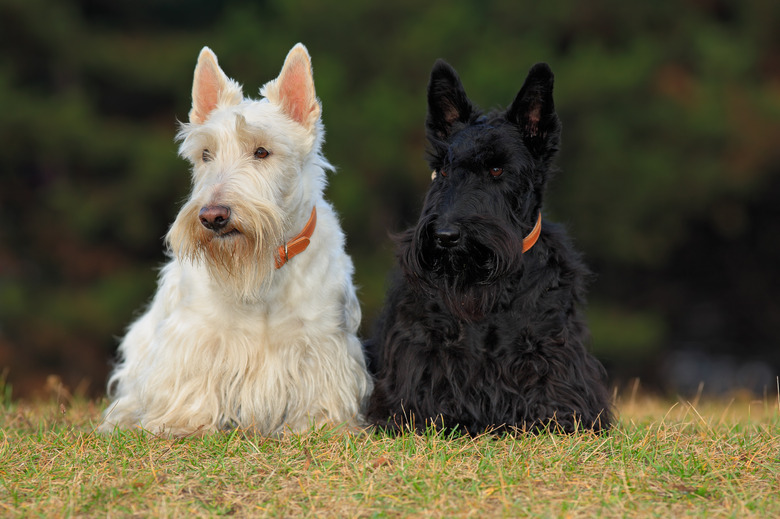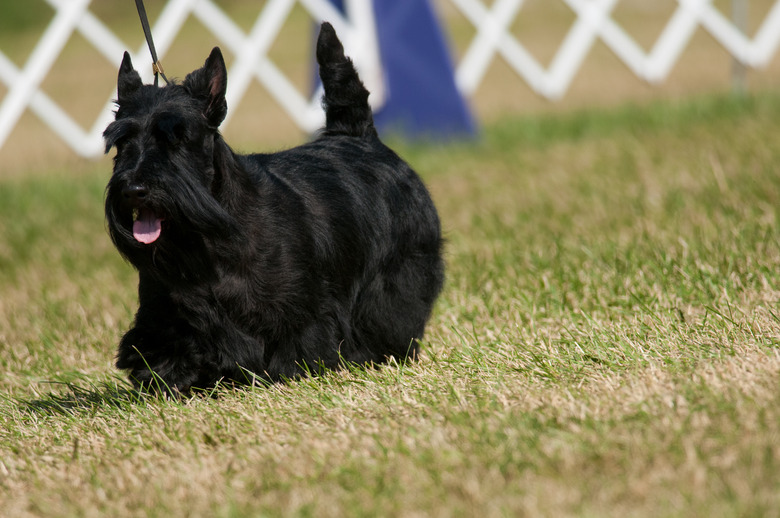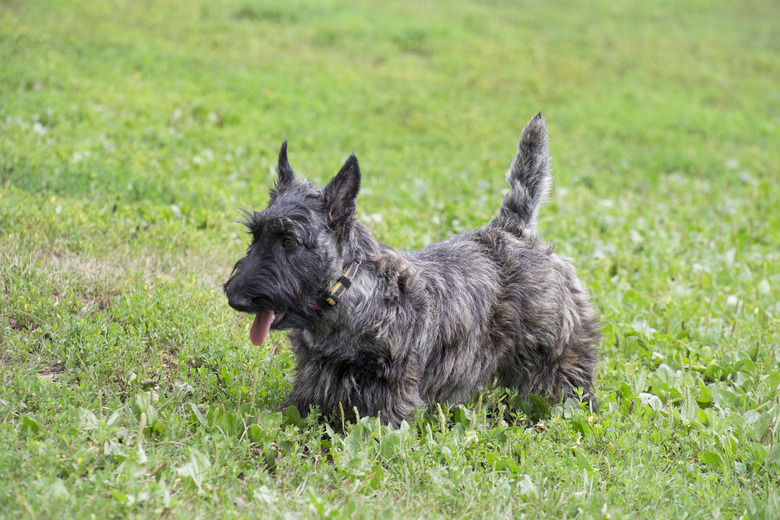Scottish Terrier (Scottie) Characteristics, Temperament & Grooming
Known colloquially as the Scottie, the Scottish Terrier is a distinctive looking pup with a strong, independent personality. They are known to be clever, but anecdotally, some people say they can be grouchy around other creatures such as dogs and cats. If you have rodents or other small pets around, the Scottie won't hesitate to go after them due to their breeding history of being used for hunting small animals (so just watch out for your pet hamster). These dogs like going on walks, but they are generally not overly demanding when it comes to activity.
The Scottish Terrier comes from, where else, Scotland. This dog originated in the Scottish Highlands, and people used them to help hunt foxes, rats, and badgers. It is the oldest known breed to come out of Britain. Scotties were first imported into the United States in the 1880s, joining the American Kennel Club (AKC) in 1885. President Franklin Roosevelt and actors Humphrey Bogart and Bette Davis all had Scotties.
If you're considering getting a Scottie, here is some essential information about the breed that would be helpful to know.
Scottish Terrier Characteristics
Scottish Terrier Characteristics
The Scottish Terrier is part of the Terrier Group of the AKC. A male adult will weigh between 19 and 22 pounds, while a female adult will weigh between 18 and 21 pounds. The height at the withers for both the male and female is 10 inches. These dogs have medium-length double coats as well as short legs and ears that are naturally upright. The typical colors of a Scottie are black with or without white, as well as brindle or wheaten.
Scottish Terrier Temperament & Training
Scottish Terrier Temperament & Training
Breed is never a reliable indicator of personality. But generally, Scotties are energetic and, when they become adults, they can become a bit moody. They may be aggressive towards other pets and small children, who may not know how to treat dogs. If older children can learn to treat the Scottie right, then they should get along well. Scotties are not too needy when it comes to attention, but they could be stubborn when you're trying to train them.
Keep in mind that it's important to train and socialize your Scottie when he's a puppy, if possible. But if you adopt an older Scottie, of course you can still train him. It's best to use positive reinforcement no matter what dog breed you own. This means rewarding him for doing things right instead of punishing him when he does things wrong. And if you need any help, you can always hire a qualified dog trainer to step in.
Scottish Terrier Grooming
Scottish Terrier Grooming
Since Scottish Terriers have a medium-length, wiry and hard double coat, their grooming needs are high. Scottie Owners will need to regularly hand strip and coat roll their pups in order to maintain the quality of the coat. The dog's beard and eyebrows have to be conditioned regularly as well. It's a good idea to formally groom your pup or take him to a groomer every four to six weeks. You should also spend 20 to 30 minutes every week brushing out your Scottie's furnishings, or the long mustache and eyebrows.
It's important to wash your dog with only dog shampoo and trim your dog's nails as needed. Additionally, it's a good idea to brush your dog's teeth every day to maintain dental health.
Scottish Terrier Exercise & Health
Scottish Terrier Exercise & Health
Since Scotties are energetic, they should receive at least one hour of exercise every day. If your Scottie doesn't get his energy out, then he could be be quite a handful. You'll need to keep him on a leash at all times if you're not in a fenced area, since he has a high prey drive.
In terms of health conditions, Scottish Terriers are susceptible to eye problems, Cushing's Disease, the blood clotting disorder Von Willebrand's disease, bladder or kidney stones, and mast cell tumors. Take your Scottish Terrier to the vet for regular check-ups to ensure that he's healthy.
Scottish Terrier Puppies
Scottish Terrier Puppies
A Scottish Terrier will weigh 5.5 pounds at eight weeks of age. It will be fully grown by the time it hits 12 months of age and is an adult.


